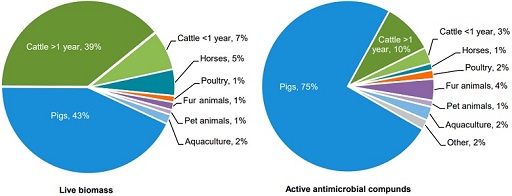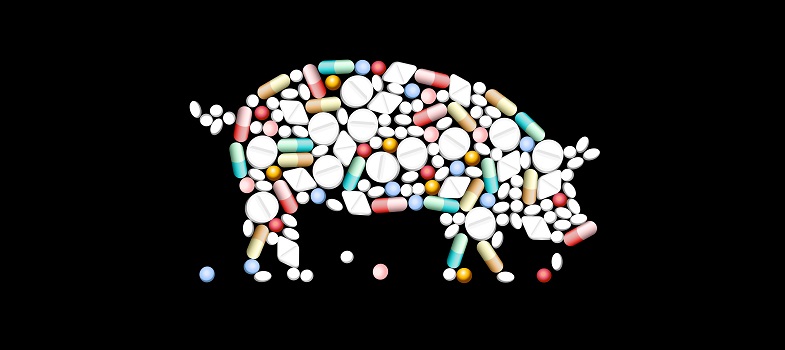2.2.4 Understanding the epidemiology of AMR
As explained in the Antimicrobial resistance in animals module, resistant bacteria from animal systems can be transmitted indirectly to the environment through water sources, manure and soil, and can be accumulated or transmitted to other animal populations. Similarly, resistance present in the environment can also be transmitted to farm animals.
Surveillance activities targeting the environment and wild animals are needed to be able to establish baseline data, sources of resistant bacteria or hotspots to be regularly monitored, and identify where interventions can be implemented to reduce the risk of AMR in humans, animals and the environment. For example, AMR surveillance has been conducted in wild animals in Sweden to investigate the source of strains of MRSA, which has been described in the human population in other countries in Europe (Bengtsson et al., 2017).
Establishing baseline data and monitoring AMU in animals would allow for the production of improved prescribing and prudent use guidelines that can lead to a reduction of AMU in animals, and further reduce the risk of development of resistant bacteria in animals and humans. Currently the information that is reported refers to antimicrobial consumption, as explained in Section 1.3.1. This data is also useful for the national and global level because it can:
- provide information on trends and the type of antimicrobials used
- inform policies
- be compared to data from the human sector.
Figure 8 shows the distribution of consumption of antimicrobials by animal species in Denmark compared to the live biomass, as the mass of the species. The pig and cattle sectors present the highest biomass, as the weight of living organisms of a species (43% and 39% respectively), but the pig sector was reported to use 75% of all veterinary prescribed antimicrobials in animals in Denmark. This is due to the large amount of production and consumption of antimicrobials. Cattle present a comparable biomass: the majority of cattle consists of dairy cows, which have low consumption of antimicrobials in Denmark.

In Denmark, all antimicrobials are available on prescription only. Data on all sales of veterinary prescription medicine from the pharmacies, private companies, feed mills and veterinarians are sent electronically to a central database called VetStat, which is hosted by Danish national authorities.
Before 2001, available data was antimicrobials sales derived from pharmaceutical companies. In addition, the national action plan (NAP) against AMR set several goals, including the reduction of AMU. To achieve this, a Yellow Card initiative was implemented in 2010, mainly targeting pig farmers as the bigger users, using surveillance at herd level, and establishing threshold values for AMU in individual herds. Legal action would be taken against farmers with high AMU. Decreased AMU was observed in the following year. It is important that this measure is complemented by health management at the farm to prevent diseases.
If you are interested to know more about potential legislation in the last 20 years in Denmark, visit Section 4.1 of the DANMAP report [Tip: hold Ctrl and click a link to open it in a new tab. (Hide tip)] (Korsgaard et al., 2020). An FAO report includes lessons learnt from this process (FAO/Denmark Ministry of Environment, 2019).
Activity 5: Reflecting on the uses of surveillance data
- Why do you think that it is important that surveillance data are used to inform policy recommendations and evaluate practices?
- What sort of outcome and interventions might analysis of AMR surveillance data lead to?
Answer
- It is important to use surveillance data to inform policy recommendations in order to support the planning, development and implementation of policies to mitigate the impact of AMR. Surveillance data should enable the relative importance of different threats to be assessed in relation to public health, animal health and welfare, trade or wider society.
- Analysis of AMR surveillance data may lead to the identification of new resistance patterns or early recognition of important trends to inform risk management policies. It can allow for communication of information on prevalence, incidence and trends of resistance to those with an interest at the regional, national or international level. It can facilitate international trade in live animals and animal products by meeting international obligations, and allow the efficient allocation of resources for AMR surveillance, control and research.
2.2.3 Monitoring indicator bacteria from healthy animals



